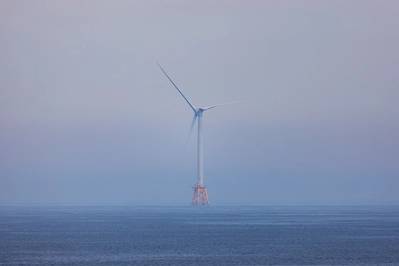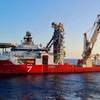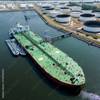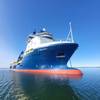US Offshore Wind: Down but Not Out
“The winds of change are blowing wild and free.” – Bob Dylan
In the U.S. offshore wind industry, developments over recent months have placed an exclamation point on the word “wild”. Yes, the wind still blows “free”, but mounting challenges have proven that harnessing its power offshore is anything but. In fact, far from it, as rising materials costs, high interest rates, labor shortages and supply chain delays, among other issues, have delivered heavy blows to the commercial viability of several projects. A number of developers have moved to cancel or seek renegotiated power contracts, slowly pushing President Biden’s target of 30 gigawatts by 2030 out of reach.
But just as the winds continue to blow offshore, there are many stakeholders still committed to ensuring offshore wind is incorporated as a growing part of the United States’ energy future. While a handful of projects have been derailed, others continue to push forward with plenty more still in the pipeline.
In November 2023, the American Bureau of Shipping (ABS) hosted its fourth annual Offshore Wind Forum in New Orleans, gathering representatives from across many segments of the maritime and offshore industries for a series of panel discussions addressing the U.S. offshore wind industry’s current challenges and path forward.
“There is no question about it. The wind industry right now has some significant challenges. Inflation is definitely one of them,” said Jan Sloth Møller, offshore site manager at Ørsted. But he noted that the goals and ambitions held by federal and state governments could create an openness to reevaluate funding arrangements for offshore wind projects in light of new cost increases. “I don't necessarily see that as a problem for the wind operation as a whole,” he said.
In the U.S., electricity is very localized, said Tim Axelsson, director of offshore wind at Liberty Green Logistics. “Every state controls its own destiny when it comes to electrical markets: how much it costs, who's going to make it, how you're going to buy it, and what the people that are going to need it are going to pay for it.”
“The northeastern states, even with these bumps in the road, are committed to offshore wind development and buying more offshore wind [power]. This crisis that occurred—the COVID crisis, inflation, and interest rates going crazy—it's affected everything and everyone, but [states] are doubling down,” Axelsson said. “I see a renewed commitment by the northeastern states to keep going.”
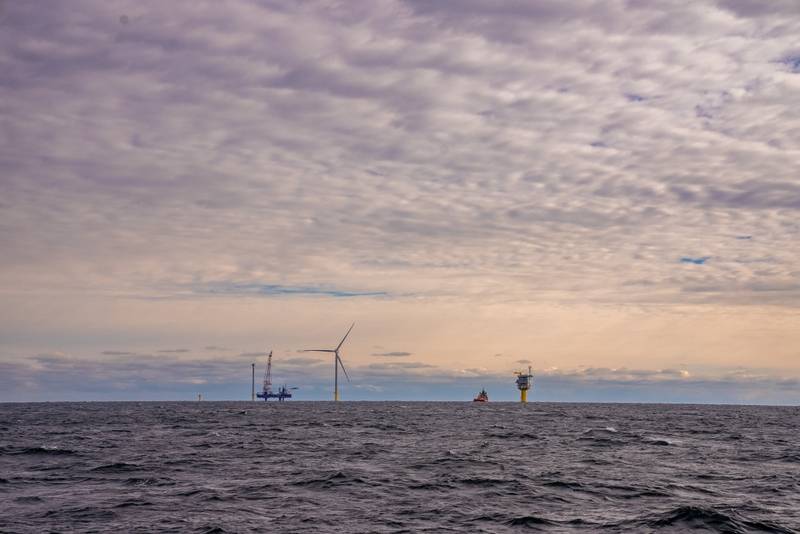 (Photo: Ørsted)
(Photo: Ørsted)
Ron MacInnes, president of Seatrium Offshore & Marine USA, acknowledged significant financial risks that are present all the way down the offshore wind supply chain, in the U.S. and abroad, but said the amount of physical progress being made can be taken as a good sign. “There is momentum in the wind market right now,” he said. “The fact that there are projects going forward means money's being spent. The fact that vessels are being built and constructed means there's money being spent. The fact that projects, some of these large wind projects, are actually being financed by bank consortiums. I think that's a lot of positives. People are committed to these projects to go forward.”
In terms of cost escalations and other “bumps in the road” for offshore wind, Møller pointed to similar challenges that have been experienced in other energy industries, such as coal and nuclear power. “And if we go back to before the COVID crisis at least, then [offshore wind was] compatible or have even surpassed the levelized cost of energy (LCOE) of fossil fuels. . . I say we are still in pretty good shape.”
Jamie Lescinski, director of business development for U.S. offshore wind at Boskalis, said the industry has come a long way in the last three to five years and that there’s likely more progress on the horizon. “We're going to see a natural maturation of the market, where it's going to swing back the other way, become more mature, more stable, more evenly distributed, basically, with your risk profiles, which is what we all need.”
The first wind farms were built in Europe more than 15 years ago, Lescinski said, and it took a long time to achieve mass scale, producing levelized costs that are coming down. “That's a long road to go down. And you're also facing this in the middle of this crazy inflation and supply chain market,” she added. “Seeing costs start to levelize in Europe is a very good sign for the rest of the world while scaling up.”
Another market factor currently weighing on U.S. offshore wind is the price and availability of vessels, including both existing tonnage and newbuilds. Once again, economics is an issue.
Vessel owners need firm, long-term contracts to ensure any new vessel they order will be profitable, especially given the soaring costs for new construction. “It's a lack of revenue certainty that [prevents] vessel owners like Liberty from going out and building fleets,” Axelsson said. “[Developers] don't want to hire the vessel for five years if [they] only need it for two or three. . . The sustainable vessel ownership perspective is revenue certainty and knowing that supply chain, that project pipeline, is going to exist, but you're still competing. Chicken and egg, as always. Who's going to start building these things? Well, who's going to give me a contract?”
In some cases, existing vessels can be used as a more financially viable option. Josh Diedrich, managing director at WindServe Marine, said this is already being done with great success.
“The American fleet has a lot of really talented mariners who are able to use these existing vessels that are converted with a walk to work gangway and some additional accommodations. And they're getting the job done,” he said. “If you look on AIS, you'll see the data this past year for all The Jones Act vessels that have been worked on the two major projects offshore. And you just see day after day, the vessels are out there, they're working. . . I don't think there's as much downtime with the vessels as people thought there would be.”
Cost is still an issue though for vessels such as offshore support vessels (OSV), which have seen their charter rates rise due to a strengthened offshore oil and gas sector. The cyclic up and down of oil and gas markets directly affects vessel rates, and these impacts are felt more strongly in the U.S. than they are in Europe, Møller said. “Now we are paying the premium, because the oil market is high. But going further down, probably oil market is going to take a turn again and our business will become equally cheap, because we are connected to the oil market much more here in the U.S. than we are in Europe.”
“The oil and gas market is really picking up. It's using up a lot of those vessels,” MacInnes said, noting that many OSVs were scrapped amid weak activity during the years of the pandemic, leading to shortages—and higher rates—in today’s strong market. “When COVID came, there was no work. We had to scrap all these vessels. Now we look back, we wish we had more of those vessels.
 (Photo: Ørsted)
(Photo: Ørsted)
(As published in the February 2024 edition of Marine News magazine)



